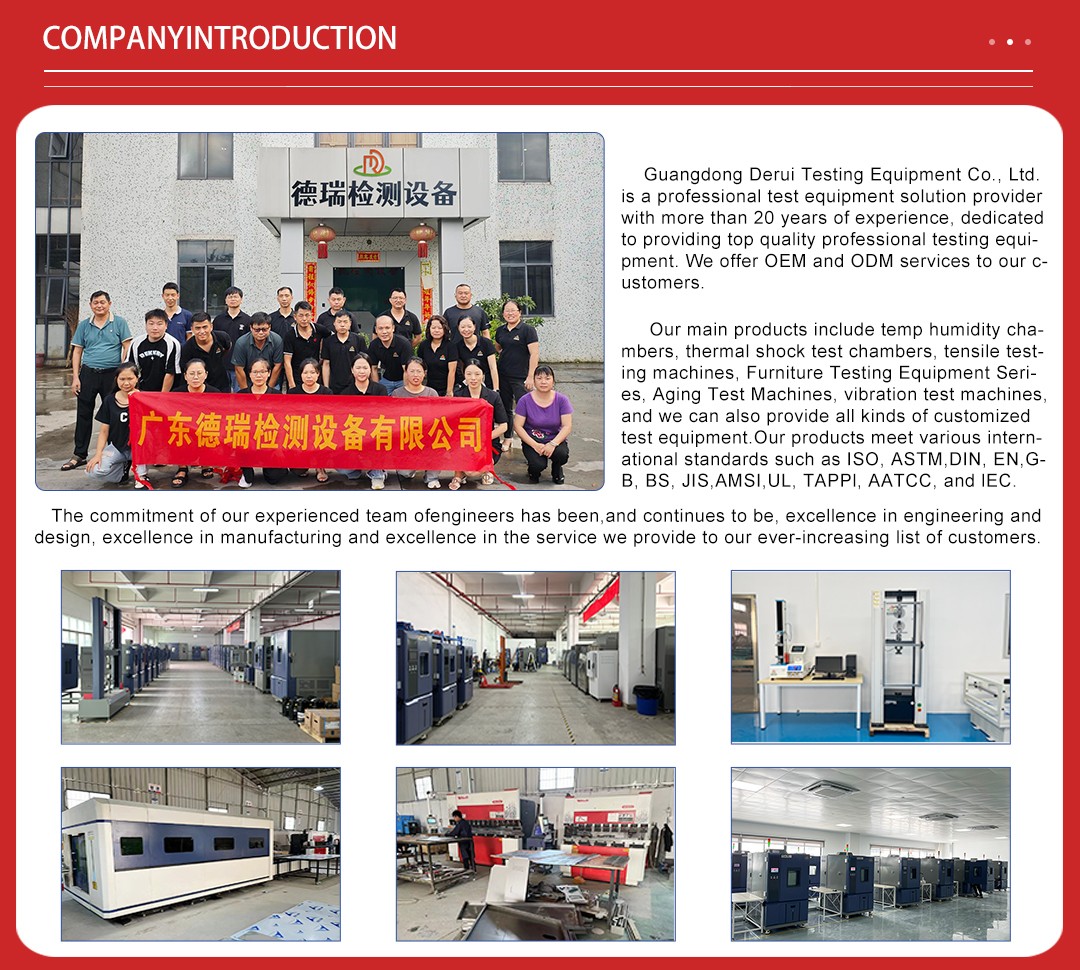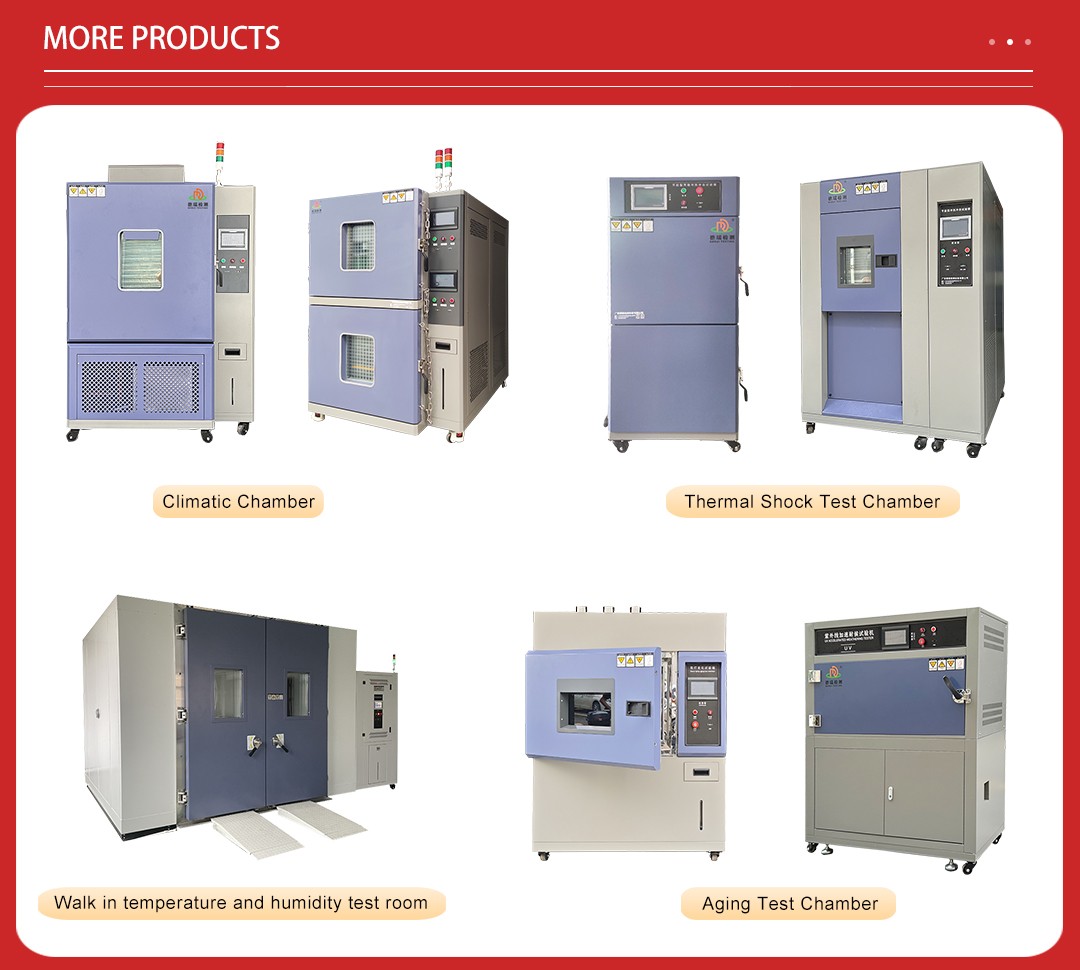
The UV aging chamber is an essential tool in the quality assurance process for manufacturers of textiles and plastics. It simulates the damaging effects of long-term sunlight exposure, enabling indust ...

The UV aging chamber is an essential tool in the quality assurance process for manufacturers of textiles and plastics. It simulates the damaging effects of long-term sunlight exposure, enabling industries such as automotive, aerospace, construction, and consumer goods to assess the durability and longevity of their materials under accelerated conditions. This equipment is indispensable for R&D departments, testing laboratories, and production facilities that require precise evaluation of material resistance to UV radiation.

The UV aging chamber adheres to international standards such as ISO 4892, ASTM G154, and DIN 53388, which specify the methods for determining the resistance of materials to UV light. Users should select the appropriate standard based on the intended application and geographic region. Testing requirements may include specific exposure durations, temperature ranges, and humidity levels, depending on the material and its end-use.

1. Advanced UV Simulation: Equipped with state-of-the-art UV lamps that closely mimic natural sunlight, ensuring accurate and repeatable test results.
2. Customizable Environments: Offers programmable cycles for temperature, humidity, and irradiance, tailored to simulate various climatic conditions.
3. Intuitive Control System: A user-friendly interface allows for easy setup and monitoring of tests, with real-time data logging for comprehensive analysis.
4. High Efficiency: Designed for rapid testing, significantly reducing the time required to evaluate long-term material degradation.
5. Safety and Reliability: Built-in safety features and robust construction provide a dependable environment for conducting rigorous tests.

1. The surface of the specimen from the lights from the nearest parallel to the surface: about 50mm
2. Wavelength range: UV-A wavelength range of 315 ~ 400nm
3. Within the radiation intensity 1W/m2/340nm
4. Temperature Resolution: 0.1 ℃
5. Light Temperature range: 50 ℃~ 70 ℃/ temperature tolerance of ± 3 ℃
6. Condensing temperature range: 40 ℃~ 60 ℃/ temperature tolerance of ± 3 ℃
7. Blackboard thermometer measuring range: 30 ~ 80 ℃/ tolerance of ± 1 ℃
8. Temperature control: PID self-tuning temperature control mode
9. Humidity range: about 45% ~ 70% R.H
10. Sink requirements: water depth less than 50mm, and a water supply automatic controller
11. Standard Specimen size: 75 × 150mm 48pcs
12. Recommended instrument environment: 5 ~ 35 ℃, 40% ~ 85% R • H, 300mm from the wall
13. Voltage: 220V ± 5%, single-phase three-wire, 50Hz, 10A, 15A GFCI requirements

Working Principle
The UV aging chamber operates by exposing samples to controlled levels of UV light, which accelerates the photochemical reactions that occur naturally when materials are exposed to sunlight. The chamber can also introduce moisture and heat to replicate outdoor weathering effects. By cycling through these conditions, the chamber provides a comprehensive simulation of the aging process, allowing for the assessment of material properties such as color fading, cracking, and loss of mechanical strength.
Product Performance
1. Wide Range of Parameters: Capable of maintaining temperatures from 10°C to 85°C, relative humidity levels up to 95%, and UV intensity within specified limits.
2. Precise Control: Advanced sensors and control algorithms ensure tight regulation of all environmental factors, minimizing variability in test outcomes.
3. Durability and Longevity: Constructed from corrosion-resistant materials, the chamber is built to withstand harsh testing conditions over extended periods.
Usage Method
1. Sample Preparation: Prepare the textile or plastic samples according to the relevant standards.
2. Parameter Setting: Program the desired environmental conditions, including UV intensity, temperature, and humidity cycles.
3. Loading Samples: Place the samples inside the chamber, ensuring they are properly positioned for uniform exposure.
4. Test Initiation: Start the test cycle and allow the chamber to automatically manage the environmental parameters.
5. Monitoring and Analysis: Continuously monitor the test progress and record key data for subsequent analysis.
6. Post-Test Evaluation: After the test, remove the samples and evaluate changes in physical and chemical properties.
Selection Considerations
When choosing a UV aging chamber, consider the following factors:
1. Material Type: Ensure the chamber can accommodate the specific types of textiles and plastics you will be testing.
2. Test Volume: Select a chamber size that fits your sample volume and layout requirements.
3. Environmental Conditions: Verify that the chamber can replicate the environmental conditions relevant to your product's intended use.
4. Data Logging and Reporting: Opt for a system with advanced data logging capabilities to facilitate detailed analysis and reporting.
5. Cost and Maintenance: Evaluate the initial cost, ongoing maintenance, and potential for customization to meet your specific needs.
By investing in a high-quality UV aging chamber, manufacturers can gain valuable insights into the performance of their materials, leading to improved product design, enhanced durability, and increased customer satisfaction.


Not search wanted products